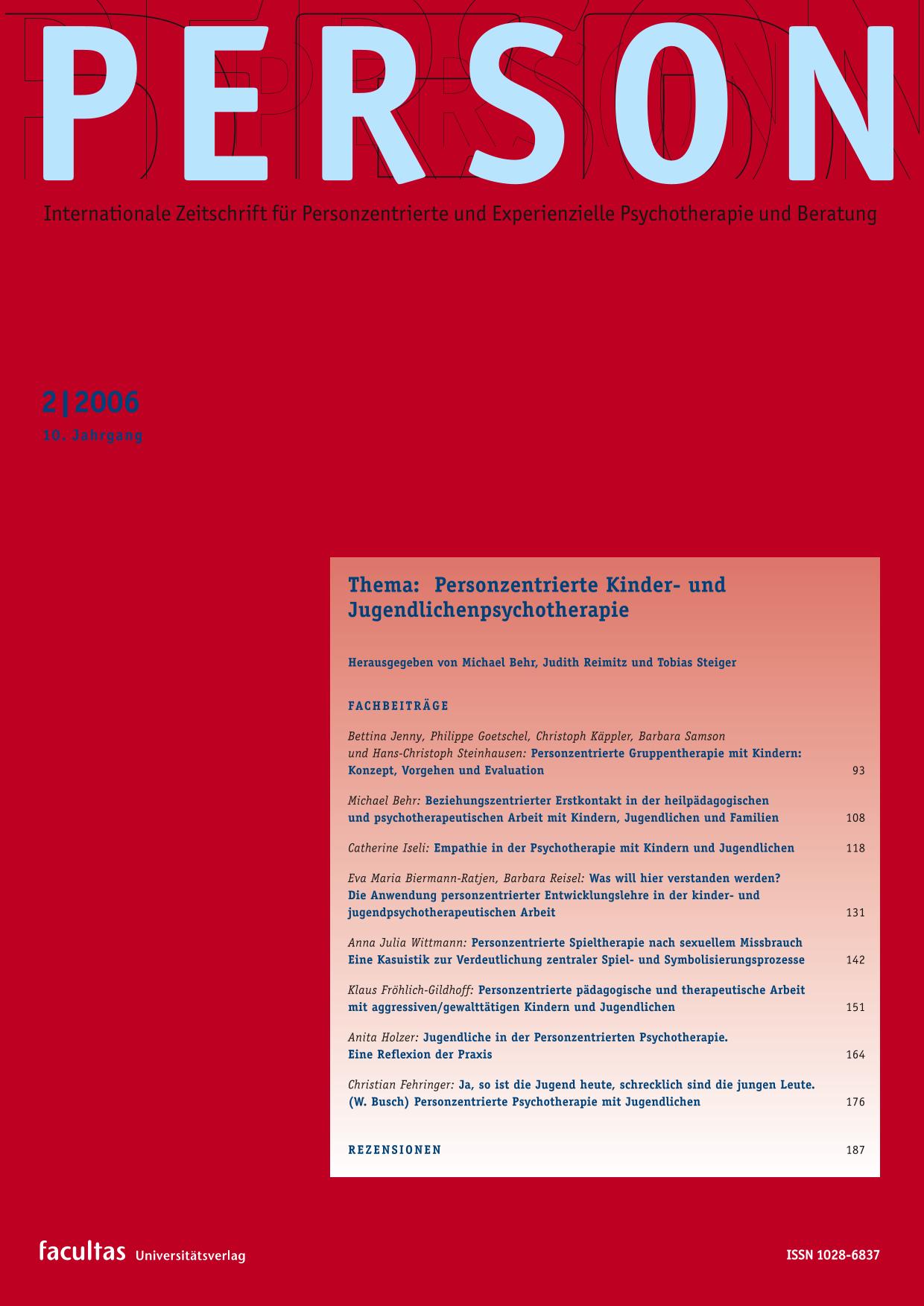Personzentrierte pädagogische und therapeutische Arbeit mit aggressiven/ gewalttätigen Kindern und Jugendlichen
Main Article Content
Article Sidebar
Abstract
Person-centered pedagogic and therapeutic interventions with aggressive and violent children and adolescents. The first part of this article shows a conclusion of actual empirical results of the causes of stable aggressive/violent behavior, based on an integrated bio-psycho- social explanation-model. Early, non-supporting and -stimulating experiences in interaction and attachment are leading to restrictions in the self-concept. In the consequence follows a) a limited („aggressive-biased“) perception of self and others, b) a lower self-regulation (affect, arousal …), c) a lower self-esteem (self-efficacy-experiences are in priority made by aggressive behavior) and d) missing social competences/skills (esp. in the regulation of social conflicts).
In case of the high stability of violent behavior and the rigid self-concept the person-centered psychotherapy concept needs a disorder-specific increase: On the base of an empathic and congruent relationship the general therapeutic attitude has to include positive regard and the willingness to confrontation. The first step in the work with aggressive/violent children or adolescents is the building up of a motivation for change. It is very important to work with the self responsibility, to change the „reality-distortion“ and to change the aggressive biased perception patterns. This needs a more structured therapeutic procedure.
How to Cite
Downloads
Article Details
Violence, aggression, disorders in social behavior, client-centered psychotherapy, children and adolescents

